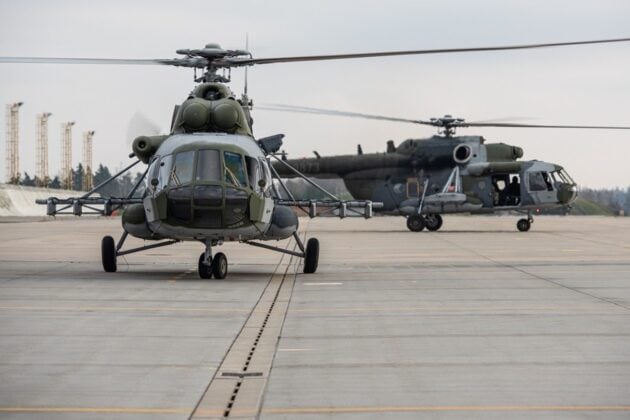
The Czech Republic will deploy a special operations helicopter unit to Poland to help counter the growing threat of Russian drone incursions near NATO’s eastern flank.
The decision follows a direct request from Poland after a phone call between Czech Defense Minister Jana Černochová and her Polish counterpart, Władysław Kosiniak-Kamysz.
According to a statement released by the Czech Ministry of Defense, the unit will be drawn from the 22nd Helicopter Air Base in Náměšť nad Oslavou and will include Mi-171Š helicopters outfitted for special operations. The deployment, expected within days, will fall under an existing mandate approved by the Czech Parliament in 2024, which allows up to 2,000 Czech troops to operate in NATO countries bordering Russia.
“Poland is a close and reliable ally. Our assistance is not just necessary—it is a matter of course,” said Defense Minister Černochová. “It is important that help arrives quickly to send a clear signal to Russia of our unity. We are ready to deploy the unit within days.”
The chief of the General Staff, Lieutenant General Karel Řehka, confirmed that coordination with Polish forces is ongoing. “We are prepared to once again deploy our special operations helicopter unit to Poland. The mission will not exceed 150 troops and is expected to last up to three months,” he said.
He added that the same unit had operated in Poland in recent years, including during disaster relief operations following catastrophic floods. The helicopters, equipped for multi-role operations, are expected to conduct reconnaissance, rapid response, and support missions related to counter-drone defense.
The current deployment mandate covers operations in Estonia, Latvia, Lithuania, Poland, Slovakia, Hungary, Romania, and Bulgaria. Czech forces are already active in Lithuania, Latvia, and Slovakia as part of NATO’s forward defense posture.
The latest move comes amid increased concerns over drone activity on NATO’s eastern borders. Warsaw has reported multiple instances of Russian drone fragments falling on its territory during Moscow’s ongoing campaign of cross-border attacks against Ukraine. While no major damage has been reported in Poland, the incursions have triggered renewed discussions among NATO members about joint air defense responses.
Though Ukraine has employed helicopters to counter drone threats for several years, the approach is seen as a stopgap. Military analysts note that while rotary-wing aircraft offer mobility and flexibility, they are not the most scalable solution. Interceptor drones and electronic warfare systems are increasingly viewed as more efficient and cost-effective methods for countering swarms of loitering munitions and reconnaissance UAVs.
Still, the Czech deployment demonstrates continued solidarity within the alliance and adds an additional layer of defense during a time of heightened tension.
In a statement to Czech Prime Minister Petr Fiala, Minister Černochová reiterated that the deployment reflects both operational readiness and political resolve. “This is about standing with our allies, ensuring our collective defense, and reinforcing deterrence at NATO’s eastern frontier,” she said.